The Marvel Universe’s not-so-big bang was 85 years ago this month…
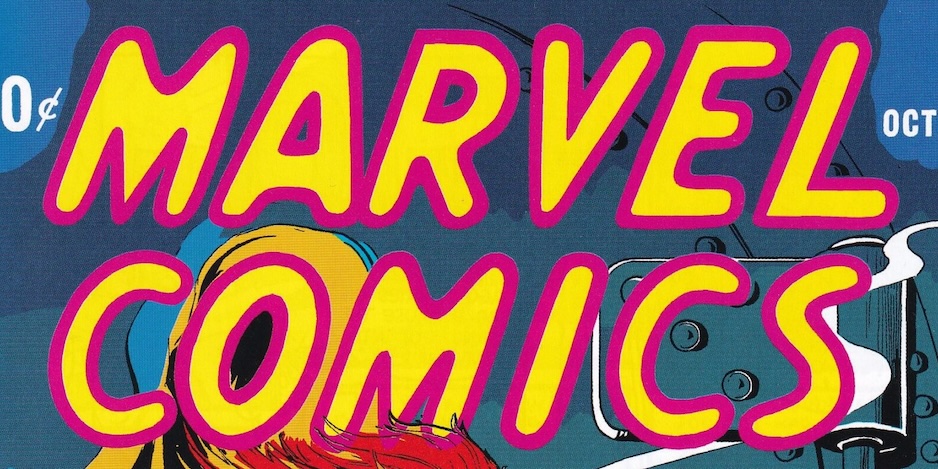
By PETER BOSCH
In Hollywood, 1939 was considered its “golden year,” when more classics were produced than any other (including Gone with the Wind, Mr. Smith Goes to Washington, The Hunchback of Notre Dame, and The Wizard of Oz). 1939 was also the year of the New York World’s Fair, and among the books of 1939 were The Grapes of Wrath, How Green Was My Valley and The Day of the Locust.
In comic books, 1939 saw the introduction of Batman, Captain Marvel, the Blue Beetle, the Sandman, AND the publication of Superman #1. (Superman had premiered the year before in Action Comics #1.) Plus, there was one more comic book – a very special one – that not only introduced two notable characters, it led to many more: Marvel Comics #1 hit the newsstands on August 31, 1939 — 85 years ago this month. Though the company was called Timely, it was the very first Marvel comic book.

Marvel Comics #1 (Oct. 1939) with the cover painting by Frank R. Paul.
Martin Goodman was, until then, the publisher of pulp magazines and he made a deal with Funnies Inc., a packaging art studio run by Lloyd Jacquet, to do the actual writing and artwork of the comic. Among the talent on Jacquet’s staff at the time were Carl Burgos, Bill Everett, and Paul Gustavson. (However, Goodman had the cover done separately by famed sci-fi pulp painter Frank R. Paul.)
Goodman sent the final package to a printing company that had, apparently, never printed a comic book before. The finished product that Goodman got back was a great shock to him, with misprinted colors, muddiness, and legibility problems. Goodman was ready to cancel his only comic title right then and there!!
A limited press run was sent out to New York locations, and to his surprise he discovered it was selling out. He ordered a much larger second printing (dated “Nov.”) and it, too, came close to selling out.
But just what was in that initial issue that caused it to succeed?
(Note: Images below are from the much better printing in the Golden Age Marvel Comics Omnibus Vol. 1 in 2009.)
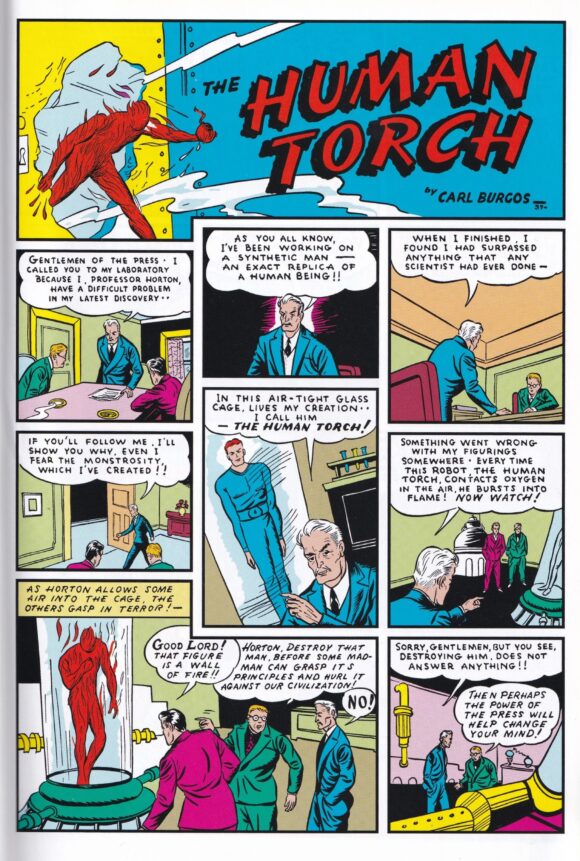
Script and art by Carl Burgos
Carl Burgos’ “The Human Torch” story is tightly written, resembling the Universal movies of the 1930s in which Dr. Frankenstein creates and then loses control of his monster. In this case, it is Professor Horton who has created a creature that looks human, but he keeps it within a man-size, airtight tube. For what purpose Dr. Horton had in creating “him” in the first place is unknown but he dehumanizes the subject in his description as a “monstrosity,” a “robot,” a “synthetic man,” and a “mechanical torch.”
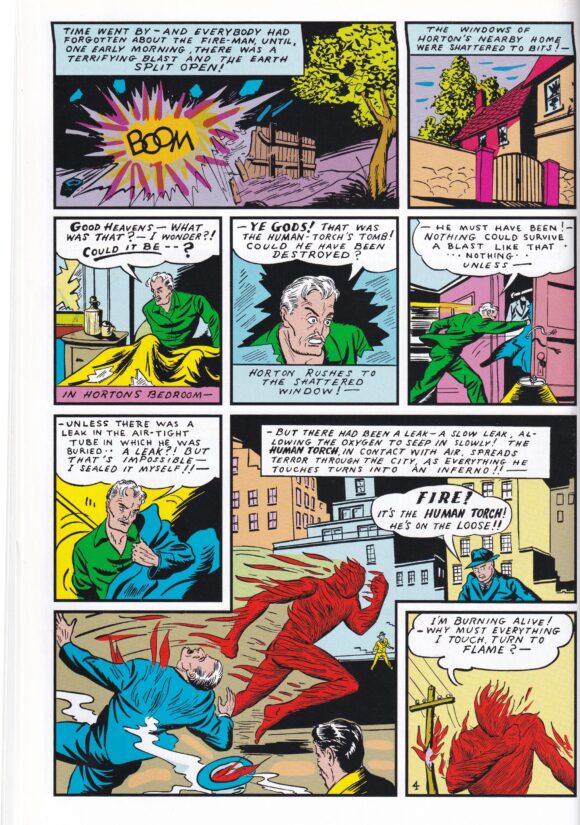
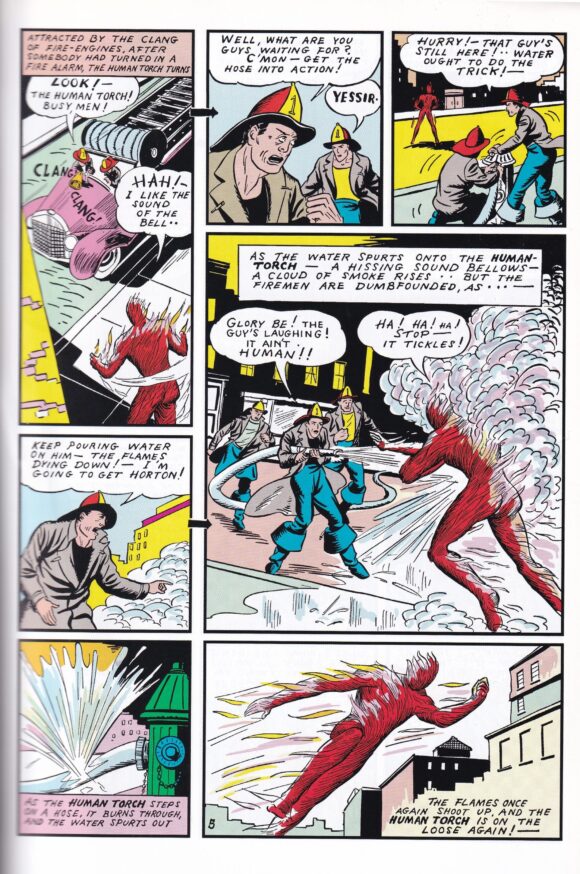
The Human Torch escapes and has at first a childlike confusion just as the Frankenstein monster did at people’s reaction to him. It isn’t long before a criminal named Sardo uses him in his protection racket, but the Torch turns against him and Sardo is destroyed by his own foolishness.
The Human Torch, having learned how to now control when he bursts into flame, gives himself up to the police but Professor Horton gets them to release him in his custody. With the Torch able to turn his flame off and on at will now, Horton sees it as a chance to make a fortune off him. Repelled by this, the Torch escapes. Excited readers would have to wait until the next issue to find out what became of him.
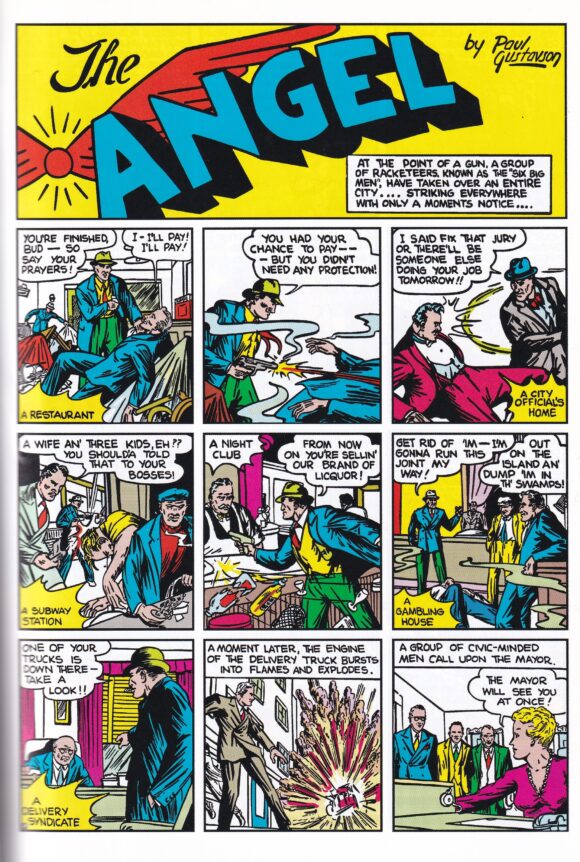
Script and art by Paul Gustavson
Next up was “The Angel,” the closest to a costumed superhero in the issue. The art and story by Paul Gustavson is a quick eight-pager in which the Angel looks to eliminate six ruthless ganglords who hold the city in fear. And he doesn’t hesitate in murdering them when need be. Nothing is told of any backstory of the Angel in this first adventure and he comes off as not mysterious but very one-dimensional.
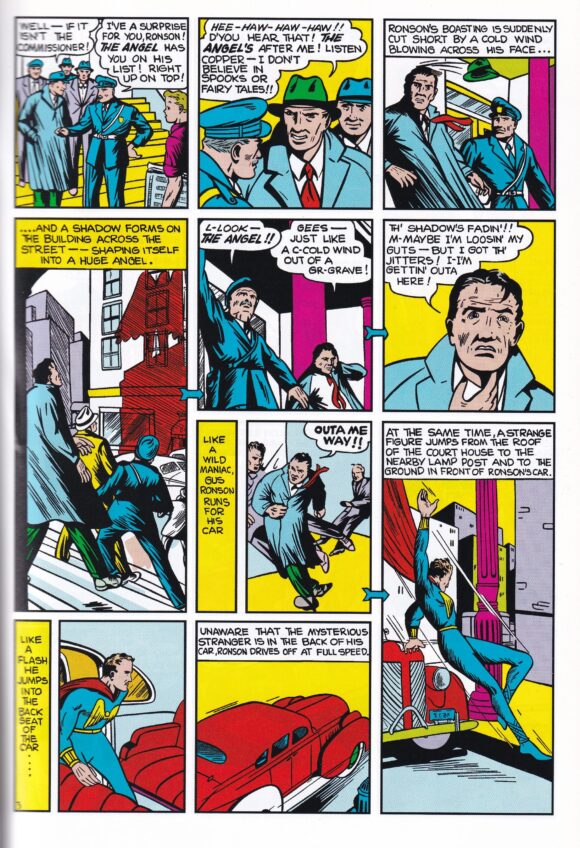
Bill Everett’s “The Sub-Mariner” tale that follows is certainly the one that was the most beautifully illustrated of the entire issue. It was also likely the one that would have readers return due to its revenge-driven, highly charged storyline.
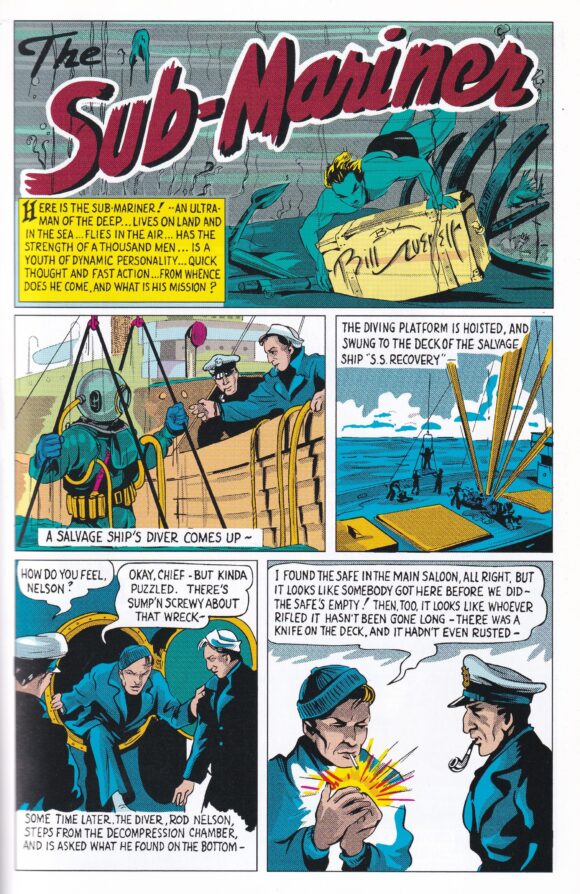
Script and art by Bill Everett
As shown in the opening pages, Namor believes two deep-sea divers are robots and cuts what he thinks are control wires but in actual fact are their air hoses. He is shocked later when he finds out he murdered two surface human beings. However, his mother is delighted.
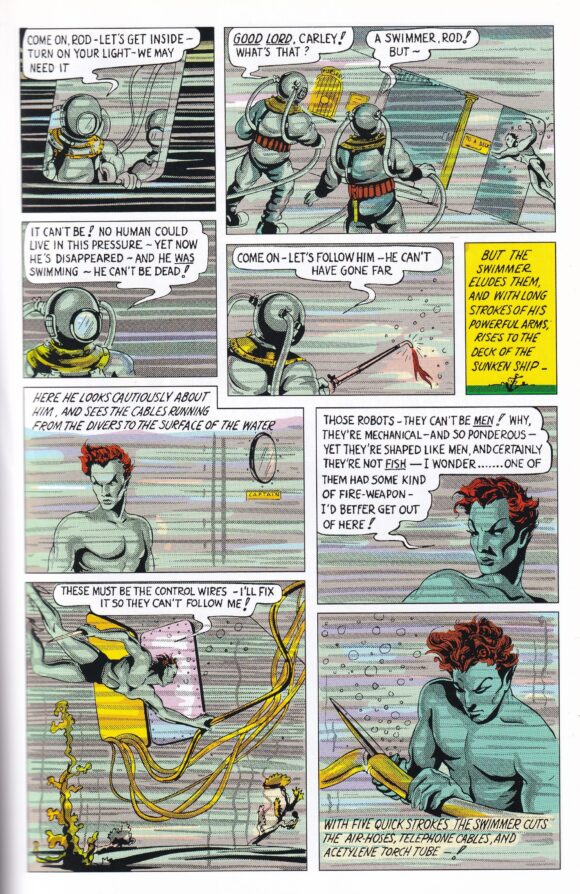
She considers this the Atlanteans’ beginning retaliation against humans responsible for the death of her people many years before. Namor is sent out to begin their war and the chapter comes to an end. The 12-pager was a quick read but the strongest story in the issue. (An eight-page version of it had previously been printed in 1939 by Funnies, Inc. in a failed experiment of theirs called Motion Pictures Funnies Weekly, which was to be sold in movie theaters.)
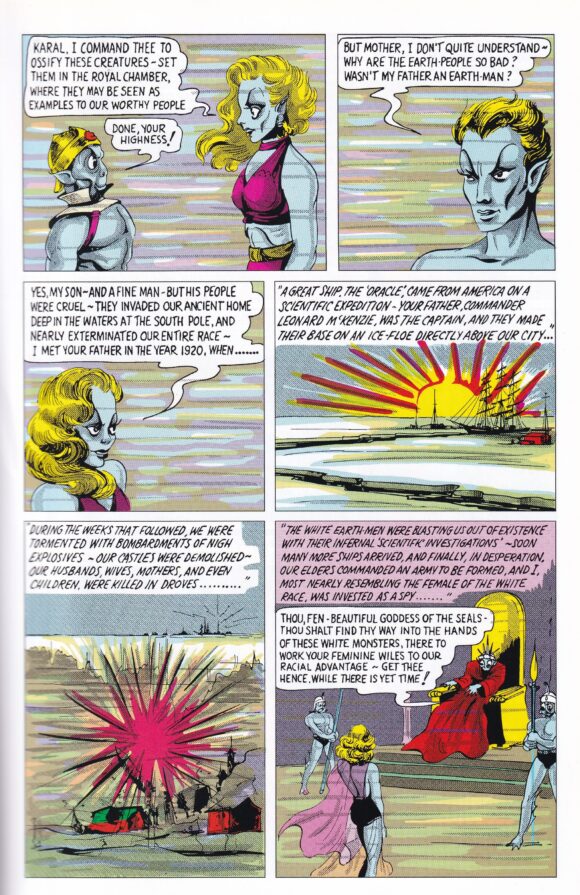
Up next is a Lone Ranger wannabe, “The Masked Raider,” by Al Anders, about a rancher framed for a crime by a land baron looking to drive people away. It was filled with Western story clichés, even for 1939.
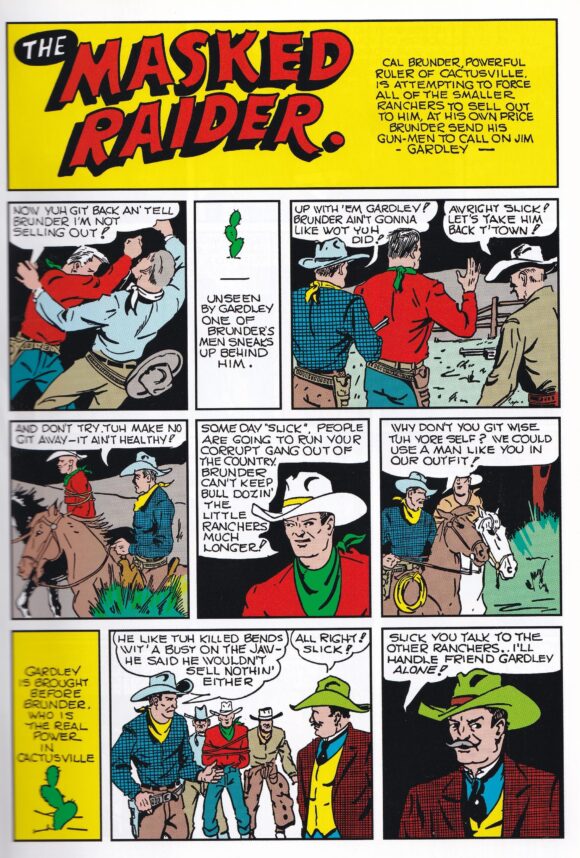
Script and art by Al Anders
“Jungle Terror,” by Art Pinajian (using the pseudonym of Tomm Dixon), is a six-page one-off story of hunting diamonds in the African jungle.
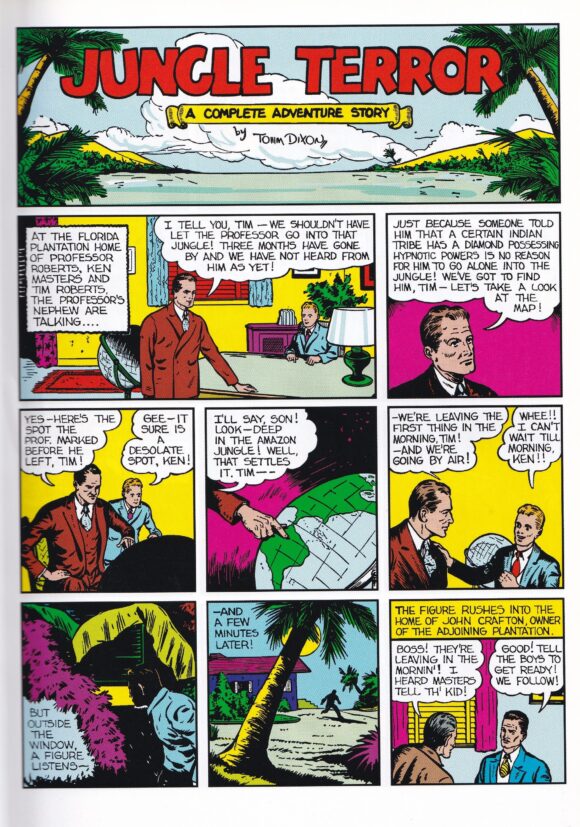
Script and art by Art Pinajian
A two-page text story by Ray Gill (with illustrations by Sam Gilman), “Burning Rubber,” is about a sportscar race. (Every anthology comic had to have something sports-oriented.)
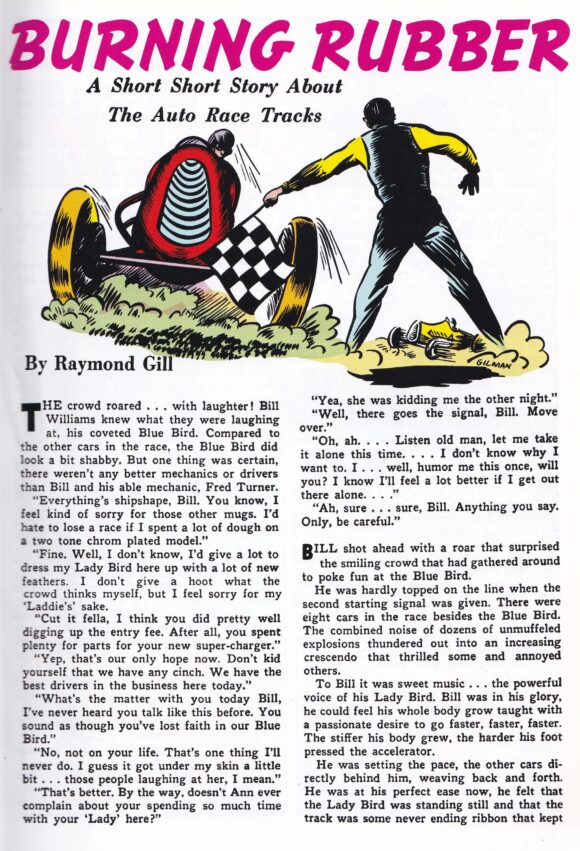
Text story by Ray Gill; illustration by Sam Gilman
The last feature is “Adventures of Ka-Zar the Great.” Ka-Zar (not the Kevin Plunder version of the 1960s) was an imitation of Tarzan and had first appeared in his own pulp title back in 1936 for three issues (also published by Marvel Goodman).
Marvel Comics #1 started an adaptation by Ben Thompson of the first pulp issue, retelling the origin of Ka-Zar, which has young child David Rand and his parents crash landing in the Belgian Congo. His mother soon dies and his father raises his son to survive in the wild. Young David, from an early age, learns the language of different animals, and becomes friends with them, particularly Zar, the lion whom he rescues from quicksand.
When his father is shot by a hunter of emeralds and it looks like David is next, Zar drives away the villain. David’s father dies and David joins with Zar by his side. From that point on, David is known as Ka-Zar, “Brother of Zar, the Mighty.”
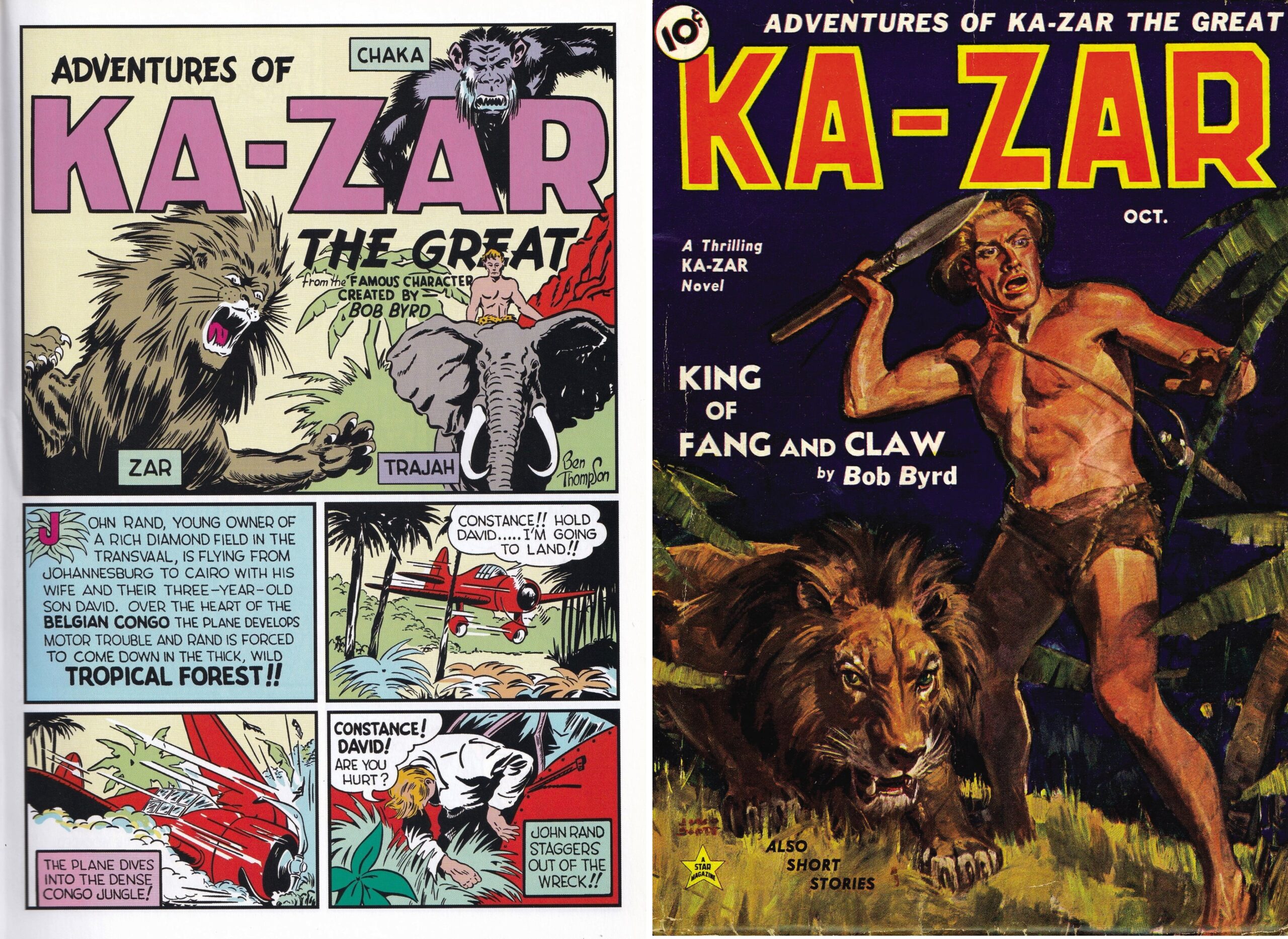
Splash page by Ben Thompson from Marvel Comics #1 and the cover of the first Ka-Zar pulp magazine (Oct. 1936, Red Circle), painted by J.W Scott.
And from that one issue, decades later, the heroic Marvel Universe would look like this — and this is just the Avengers:
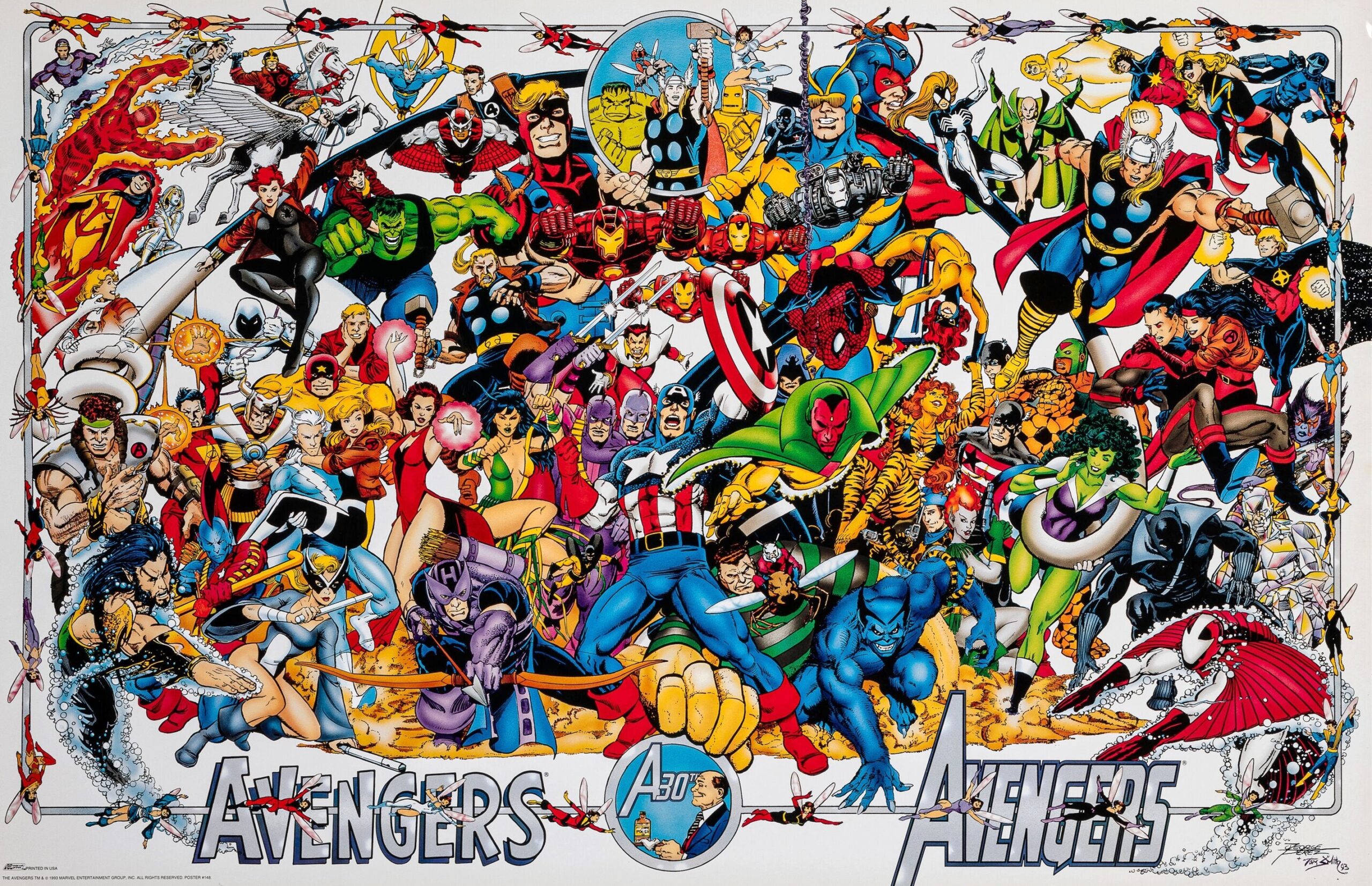
The Avengers 30th anniversary poster from 1994, illustrated by George Pérez
—
MORE
— PAUL KUPPERBERG: My 13 Favorite Things About MARVEL COMICS #1. Click here.
— ED HERRON’s Quiet Influence: From the RED SKULL to DC’s Silver Age. Click here.
—
13th Dimension contributor-at-large PETER BOSCH’s first book, American TV Comic Books: 1940s-1980s – From the Small Screen to the Printed Page, was published by TwoMorrows. A sequel, about movie comics, is coming soon. Peter has written articles and conducted celebrity interviews for various magazines and newspapers. He lives in Hollywood.
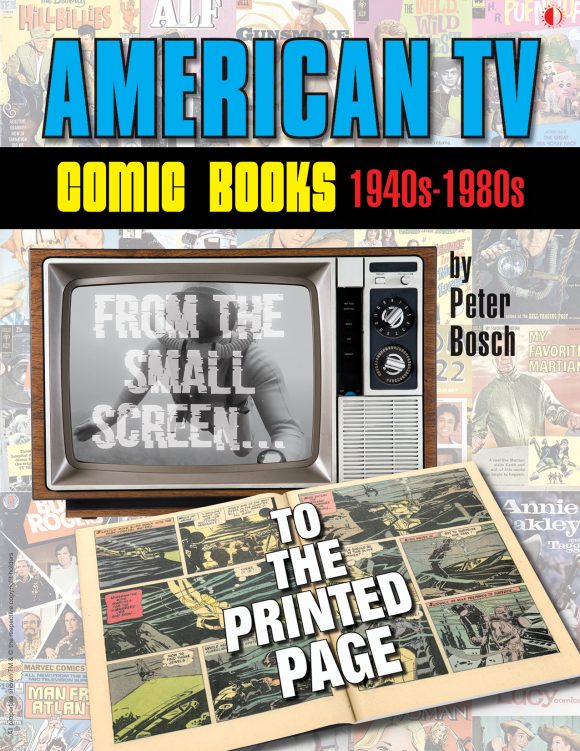

August 15, 2024
I remember being so excited to see a glimpse of The Human Torch display in the MCU movie First Avenger. For a brief time (until the movie ended), I held out hope for an Invaders story. Heck, the MCU wasted what they had already with the Howling Commandos and Peggy Carter.